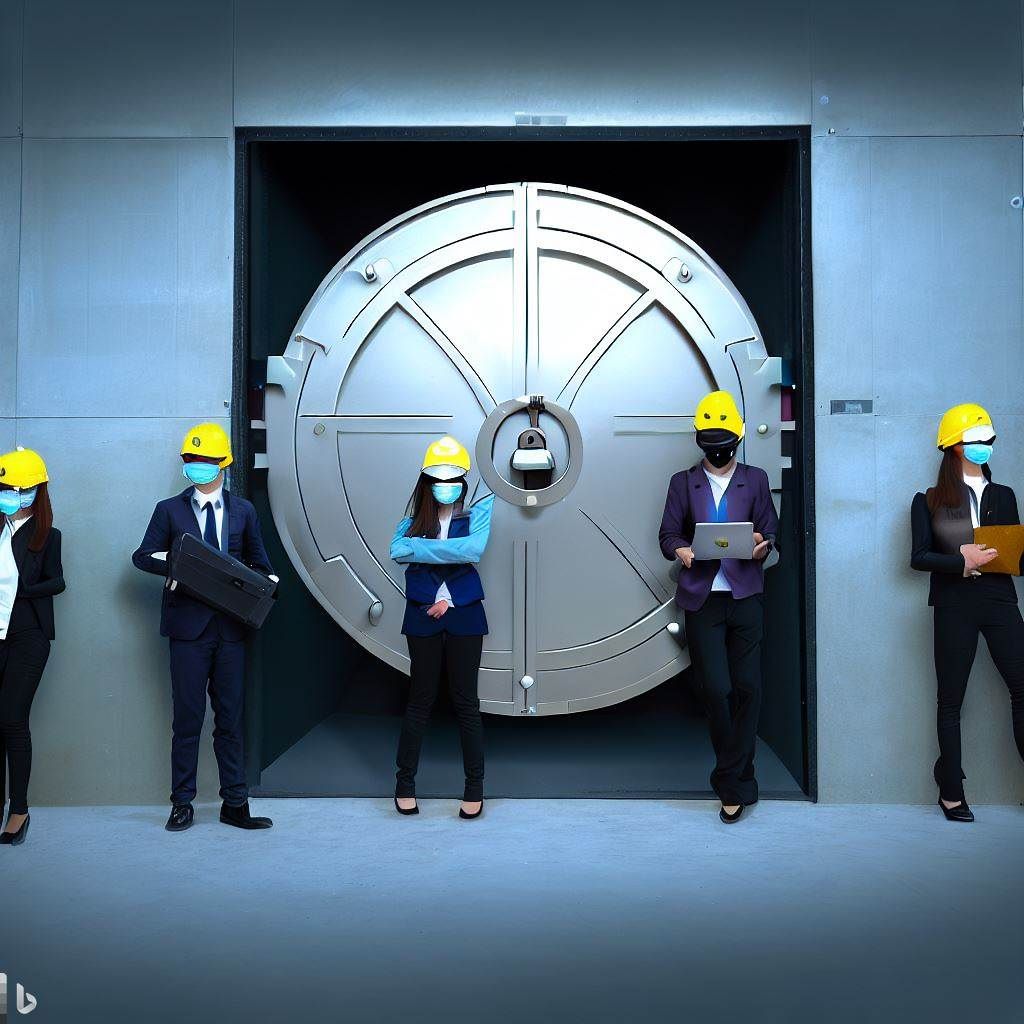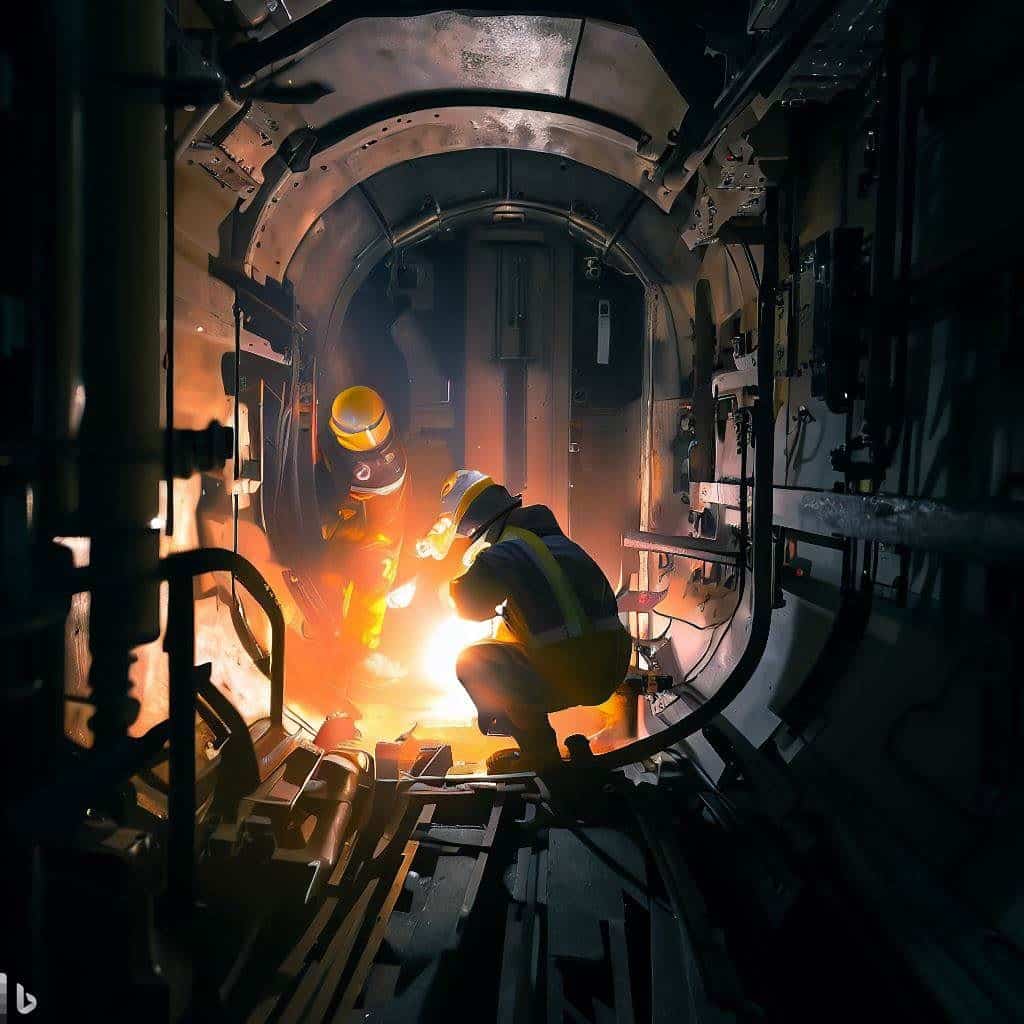Unlocking the Secrets to Workplace Safety: The Importance of a Confined Space Awareness Certificate
Workplace safety is a critical component of any successful organization. Ensuring the well-being of employees not only demonstrates a commitment to their welfare and leads to increased productivity, lower absenteeism, and reduced liability. One aspect of workplace safety that is often overlooked, yet equally important, is confined space safety.
Confined spaces pose unique hazards and require specialized knowledge and training to ensure the safety of those working in and around them. This article will explore the importance of obtaining a confined space awareness certificate and its benefits to individuals and organizations.
By understanding the dangers associated with confined spaces and the preventative measures that can be taken, we can create a safer working environment and contribute to the overall success of our organizations.
Definition of confined space awareness certificate
A confined space awareness certificate formally recognizes an individual’s understanding of the dangers of working in confined spaces and the necessary safety protocols to follow. This certification is typically obtained through specialized training programs that focus on identifying, assessing, and mitigating confined space hazards.
The certification process usually involves a combination of classroom instruction and practical exercises, culminating in a written examination and skills assessment. Upon completing the required training, participants are awarded a confined space awareness certificate, a testament to their knowledge and competence.
It is important to note that confined space awareness certificates may vary in scope and requirements, depending on the issuing organization and the specific industry or work environment. Choosing a training program appropriate for your particular needs and circumstances is essential.

The importance of confined space awareness
Confined space awareness is crucial for ensuring the safety of workers who may be required to enter or work in confined spaces as part of their job duties. These spaces can present unique hazards, such as limited access and egress, toxic or flammable substances, and the potential for oxygen deficiency or enrichment. Without proper training and awareness, workers may be exposed to these dangers, leading to serious injury or death.
By obtaining a confined space awareness certificate, individuals demonstrate their understanding of the risks associated with confined spaces and their commitment to following established safety protocols. This can reduce workplace accidents and enhance overall safety for everyone involved.
Furthermore, confined space awareness is often a legal requirement, with many jurisdictions mandating that workers who enter or perform work in confined spaces receive appropriate training and certification. Ensuring employees possess a confined space awareness certificate can help organizations comply with relevant regulations and avoid potential fines or penalties.
Benefits of obtaining a confined space awareness certificate
There are several benefits to obtaining a confined space awareness certificate for individuals and organizations. These include:
- Increased safety: A thorough understanding of confined space hazards and the necessary safety measures can significantly reduce the likelihood of accidents or injuries. This benefits the individual worker and contributes to a safer work environment.
- Compliance with regulations: Many jurisdictions require workers who enter or work in confined spaces to receive proper training and certification. Obtaining a confined space awareness certificate can help organizations meet these requirements and avoid potential fines or penalties.
- Enhanced employability: For individuals, possessing a confined space awareness certificate can be a valuable addition to their resume, demonstrating their commitment to safety and their ability to work in challenging environments. This can make them more attractive to potential employers and increase their chances of obtaining a job in their chosen field.
- Improved workplace culture: Organizations can foster a culture of safety and responsibility by prioritizing confined space safety and ensuring that employees receive the necessary training and certification. This can increase employee morale, lower turnover, and create a positive work environment.
Key components of confined space training
Confined space training programs typically cover several key areas, including:
- Identification of confined spaces: Participants learn to recognize the characteristics of confined spaces and the unique hazards they may present. This includes understanding the criteria used to define a confined space, such as limited access and egress, the potential for a hazardous atmosphere, and the presence of engulfment hazards.
- Assessment of confined space hazards: Once confined spaces have been identified, assessing their potential hazards is essential. Training programs typically cover the hazards encountered in confined spaces, such as toxic or flammable substances, oxygen deficiency or enrichment, and the potential for engulfment or entrapment. Participants learn to evaluate these hazards and determine the appropriate safety measures to mitigate them.
- Safety measures and best practices: Confined space training programs also cover the various safety measures and best practices that should be followed when working in or around confined spaces. This includes using appropriate personal protective equipment (PPE), implementing permit systems, and the proper procedures for entering and exiting confined spaces.
- Emergency response and rescue: Workers must be prepared to respond appropriately. Confined space training programs typically include instruction on emergency response procedures, such as using escape and rescue equipment, first aid, and communication protocols.
Identifying and assessing confined space hazards
The first step in ensuring confined space safety is to identify and assess the hazards associated with each space properly. This requires a thorough understanding of the various hazards that can be encountered and the factors that can contribute to their presence. Some common confined space hazards include:
- Toxic or flammable substances: Confined spaces may contain hazardous materials, such as chemicals, gases, or vapors, that can pose a risk to workers. These substances may be present due to the nature of the work being performed, or they may be introduced inadvertently through processes such as welding or cutting.
- Oxygen deficiency or enrichment: The atmosphere within a confined space may be oxygen-deficient, which can lead to asphyxiation or unconsciousness. Alternatively, it may be oxygen-enriched, increasing the risk of fires or explosions.
- Engulfment or entrapment hazards: Confined spaces may contain materials, such as sand, grain, or liquids, that can engulf or trap workers. These hazards can result in suffocation or crushing injuries.
Once confined space hazards have been identified, assessing their risk level and determining the appropriate safety measures to mitigate them is essential. This may include using PPE, ventilation systems, or other engineering controls, as well as implementing permit systems and proper entry and exit procedures.
Mitigating confined space risks: safety measures and best practices
To effectively mitigate the risks associated with confined spaces, it is essential to follow established safety measures and best practices. These may include:
- Permit systems: Many organizations implement a permit system for confined space entry, which requires workers to obtain authorization before entering a confined space. This helps to ensure that all necessary safety measures are in place and that workers are properly trained and equipped to handle the hazards they may encounter.
- Personal protective equipment (PPE): The use of PPE, such as respiratory protection, protective clothing, and safety harnesses, can help to protect workers from the hazards associated with confined spaces. It is important to select the appropriate PPE for the specific hazards present and to ensure that workers are properly trained in its use.
- Ventilation and air monitoring: Proper ventilation and air monitoring can help to mitigate the risks associated with hazardous atmospheres within confined spaces. This may include using mechanical ventilation systems and portable gas detectors or other monitoring devices to assess oxygen levels, toxic substances, and flammable substances present.
- Emergency response and rescue planning: Workers must be prepared to respond appropriately. This includes having a well-developed emergency response plan and the necessary equipment and training for rescue operations.
By adhering to these safety measures and best practices, organizations can help ensure workers’ safety and minimize the risks associated with confined spaces.
Compliance with confined space regulations
In many jurisdictions, specific regulations governing confined space safety may include requirements for training, certification, and the implementation of safety measures. By obtaining a confined space awareness certificate and adhering to established safety protocols, organizations can help to ensure compliance with these regulations and avoid potential fines or penalties.
It is essential to familiarize yourself with the confined space regulations applicable to your industry and jurisdiction and to ensure that your organization’s policies and procedures align with these requirements. This may include consulting with regulatory agencies, industry associations, or other resources to ensure your confined space safety program is up-to-date and compliant.

How to obtain a confined space awareness certificate
There are several steps involved in obtaining a confined space awareness certificate, including:
- Selecting a training program: The first step is to choose a program appropriate for your specific needs and circumstances. This may include researching various training providers, consulting with industry peers, or seeking guidance from regulatory agencies or industry associations. It is important to select a program that meets the requirements of your jurisdiction and industry and your own learning needs.
- Completing the required training: Once you have chosen a training program, you must complete the required coursework, which may include classroom instruction, practical exercises, and written examinations. Engaging in the learning process fully and seeking clarification or assistance to ensure your understanding of the material is essential.
- Obtaining your certificate: Upon completing the required training, you will be awarded a confined space awareness certificate, a testament to your knowledge and competence. Maintaining your certification by participating in ongoing training and professional development opportunities and staying informed about changes to relevant regulations and industry best practices is important.
Conclusion: Ensuring a safer workplace with confined space awareness
In conclusion, obtaining a confined space awareness certificate is crucial to ensuring workplace safety for those who work in or around confined spaces. By understanding the unique hazards associated with these environments and the necessary safety measures to mitigate them, individuals and organizations can create a safer working environment and contribute to the overall success of their operations.
By prioritizing confined space safety and adhering to established regulations and best practices, we can help protect workers’ well-being and reduce the risk of accidents or injuries. Ultimately, confined space awareness is a matter of personal responsibility and a testament to our commitment to creating a safer and more productive workplace for all.
Frequently Asked Questions:
What is a confined space?
A confined space is an area that is large enough for a person to enter and perform work, has limited or restricted means of entry or exit, and is not designed for continuous occupancy. Confined spaces can present unique hazards, such as hazardous atmospheres, engulfment hazards, or the potential for oxygen deficiency or enrichment.
Why is confined space awareness important?
Confined space awareness is crucial for ensuring the safety of workers who may be required to enter or work in confined spaces as part of their job duties. It enables them to recognize and respond to the unique hazards associated with these environments and to follow established safety protocols.
What are some common confined space hazards?
Some common confined space hazards include toxic or flammable substances, oxygen deficiency or enrichment, and engulfment or entrapment hazards.
How can I obtain a confined space awareness certificate?
You must complete a specialized training program to identify, assess, and mitigate confined space hazards to obtain a confined space awareness certificate. This may include classroom instruction, practical exercises, and written examinations. After completing the required training, you will be awarded a confined space awareness certificate.
